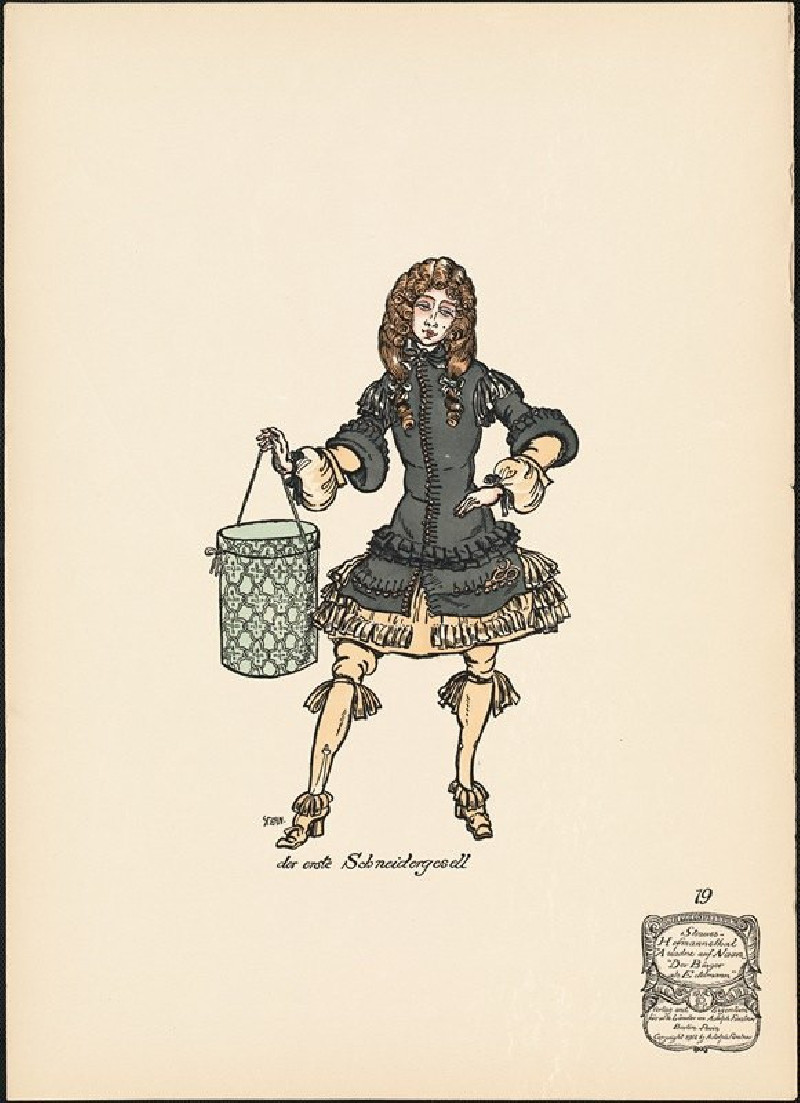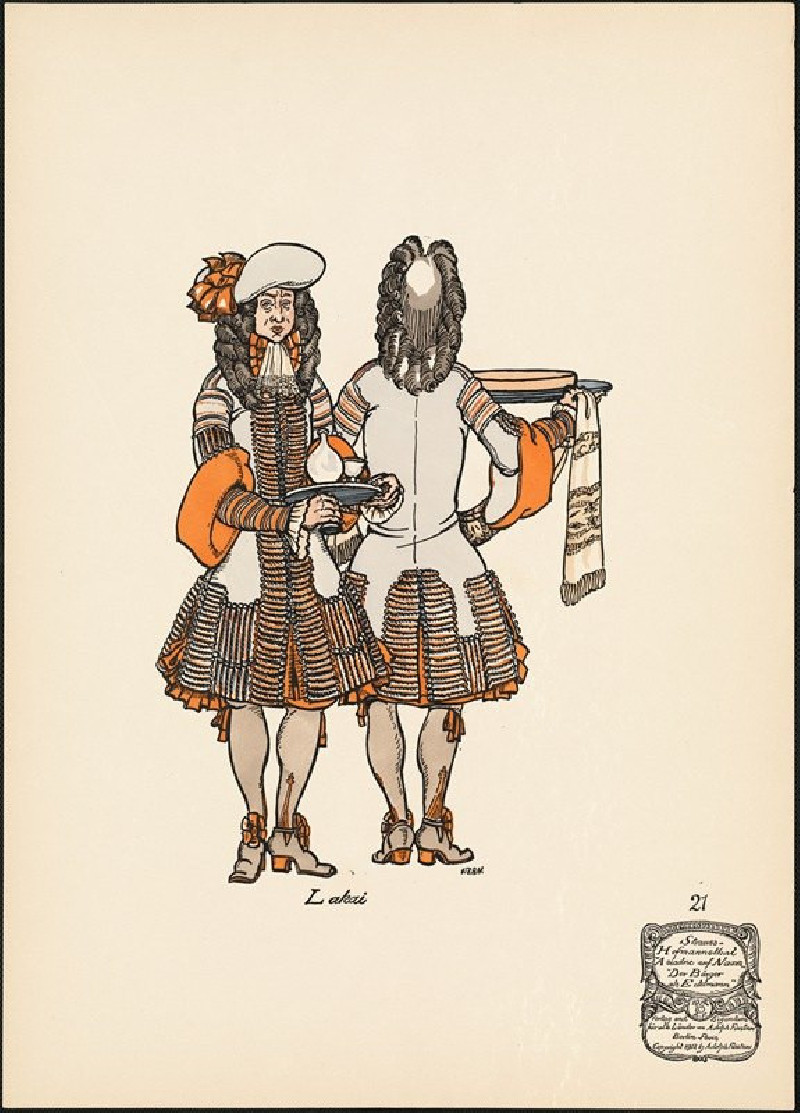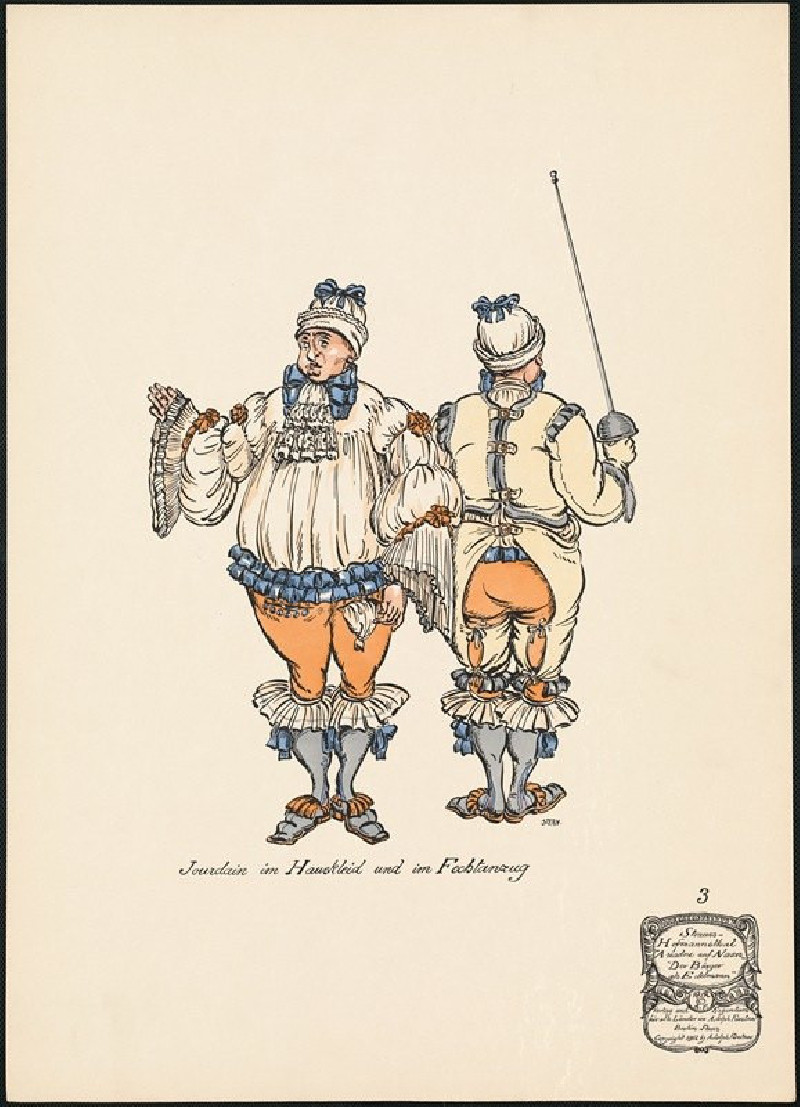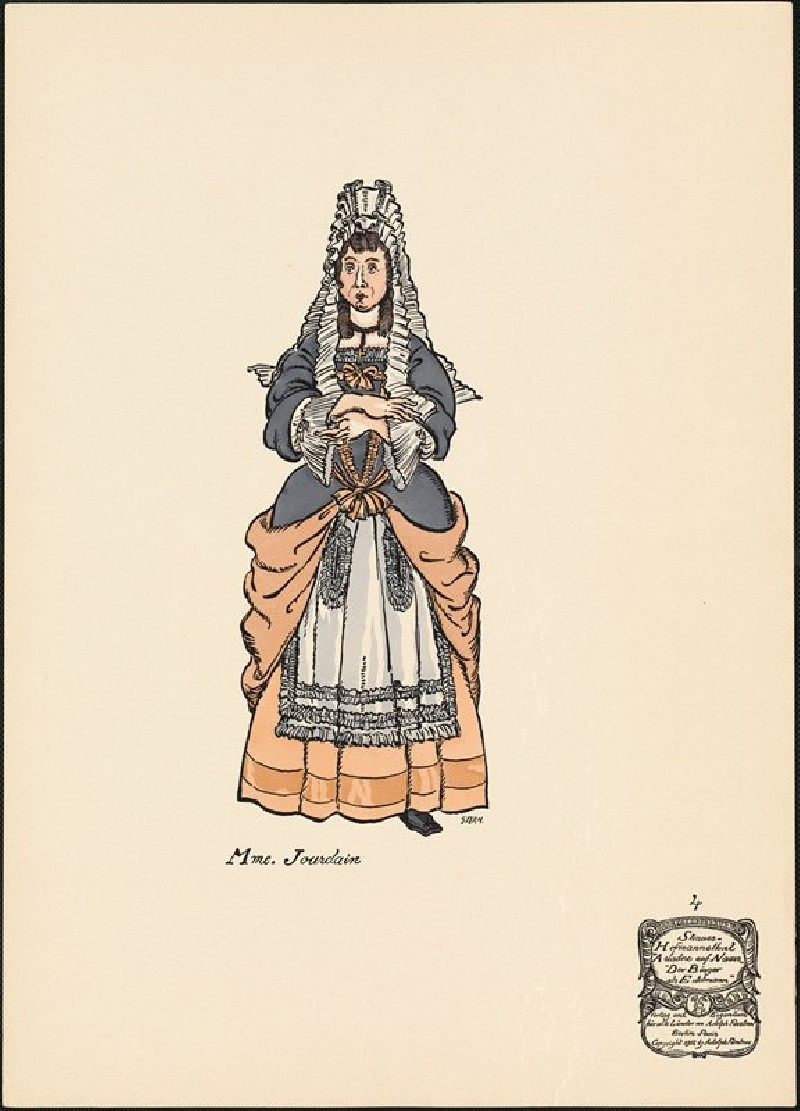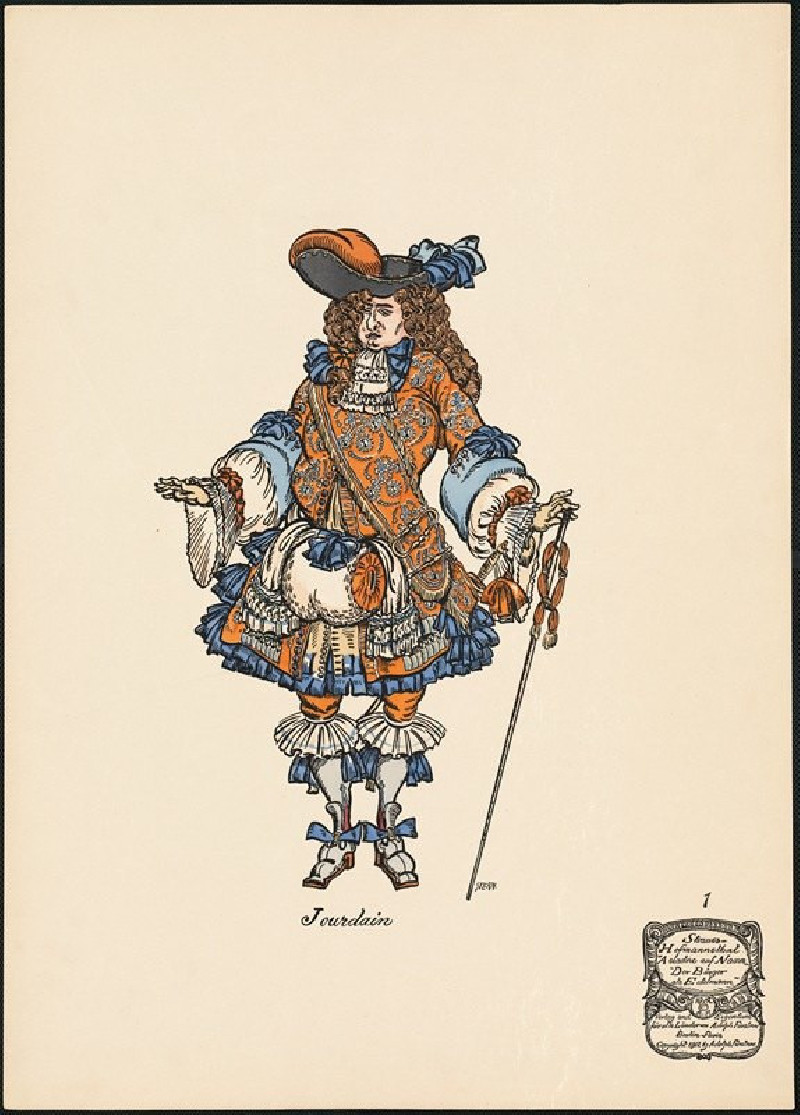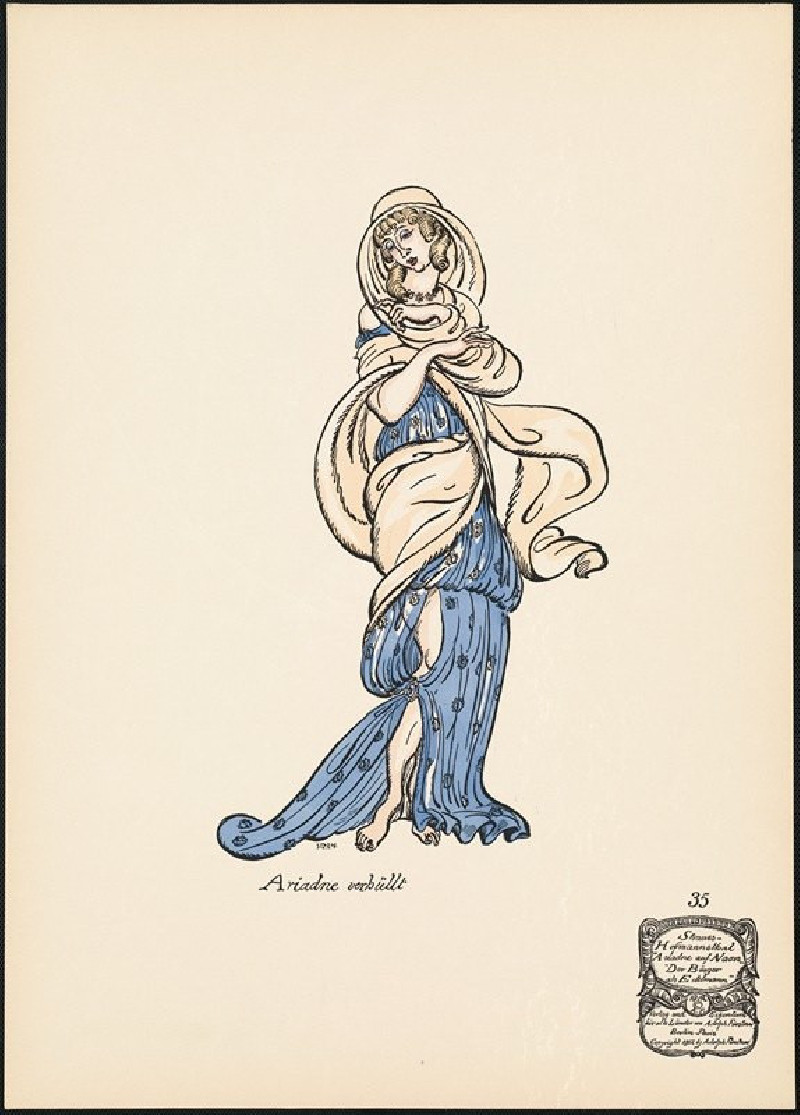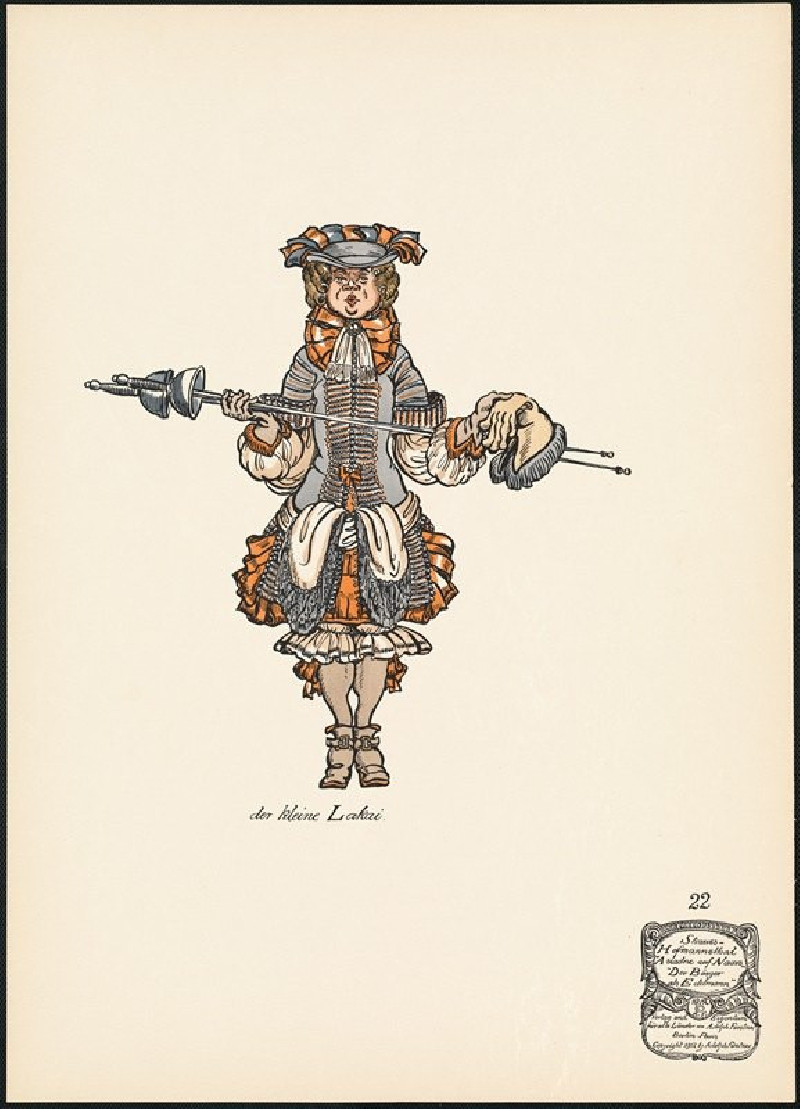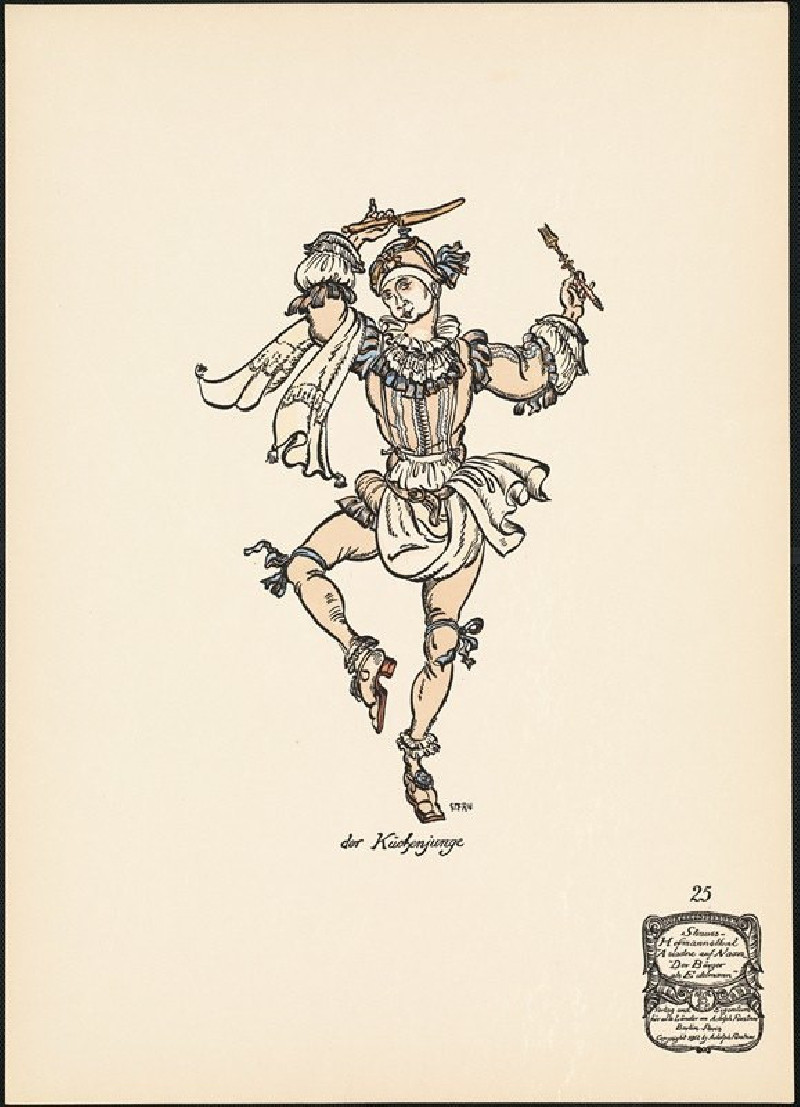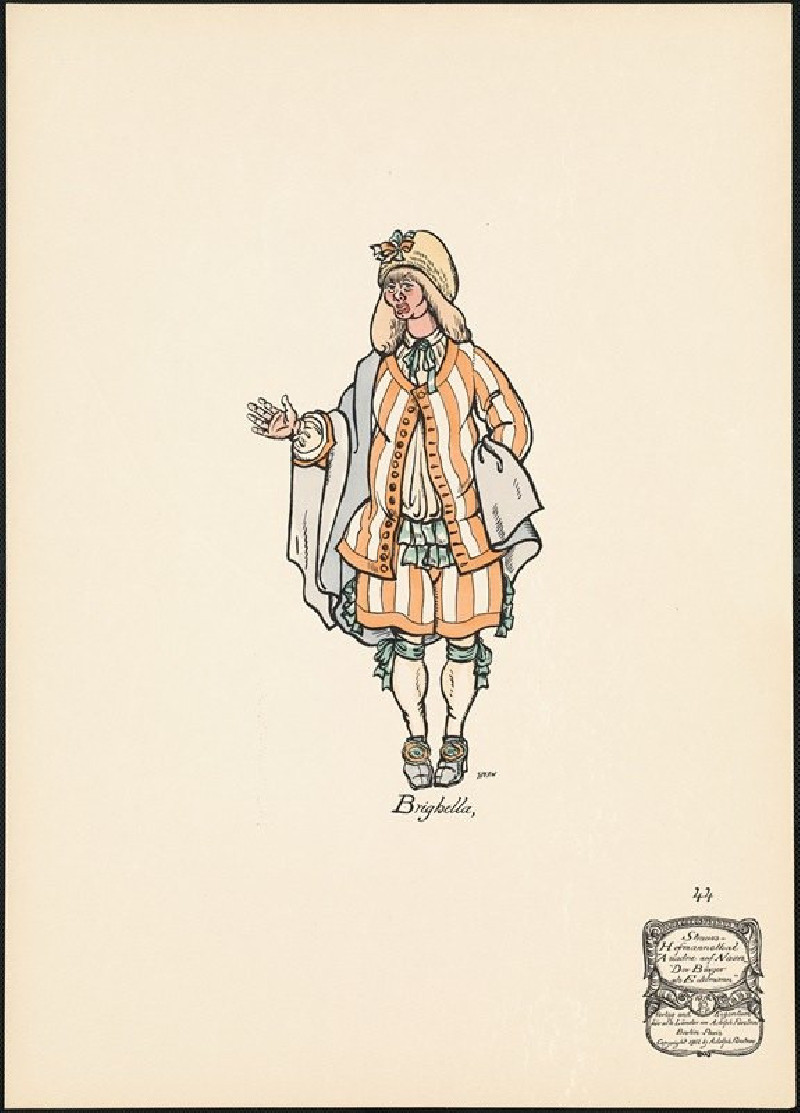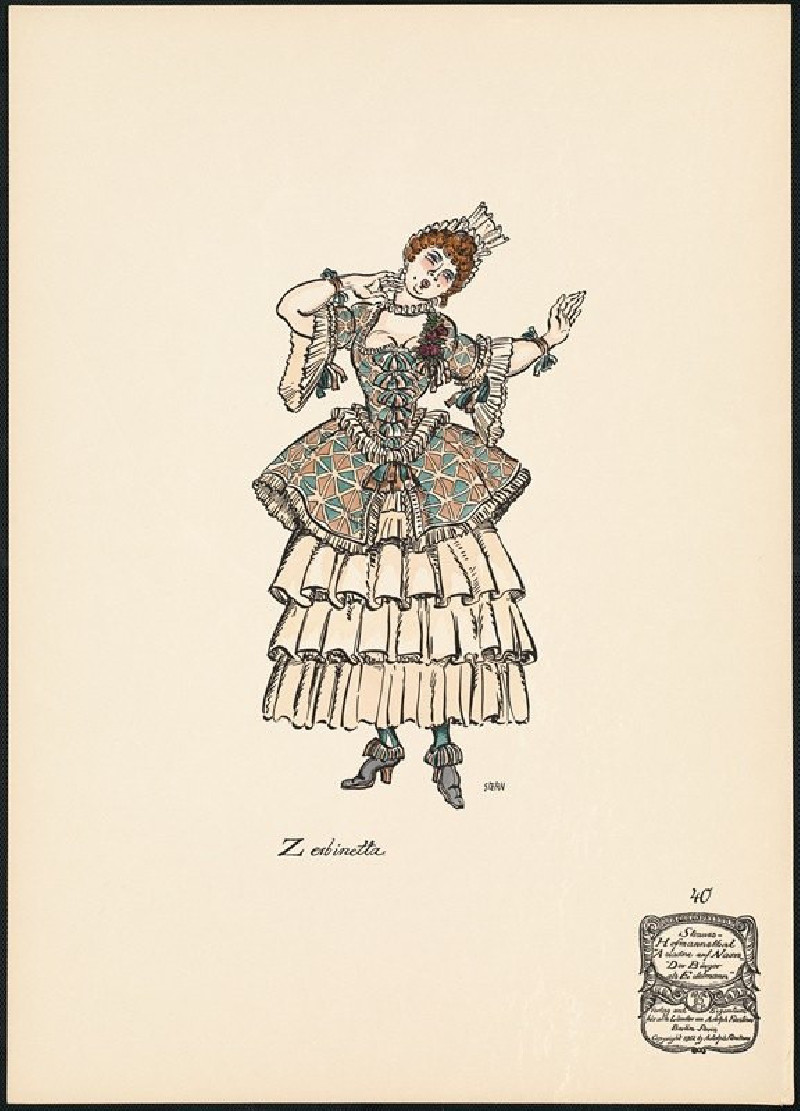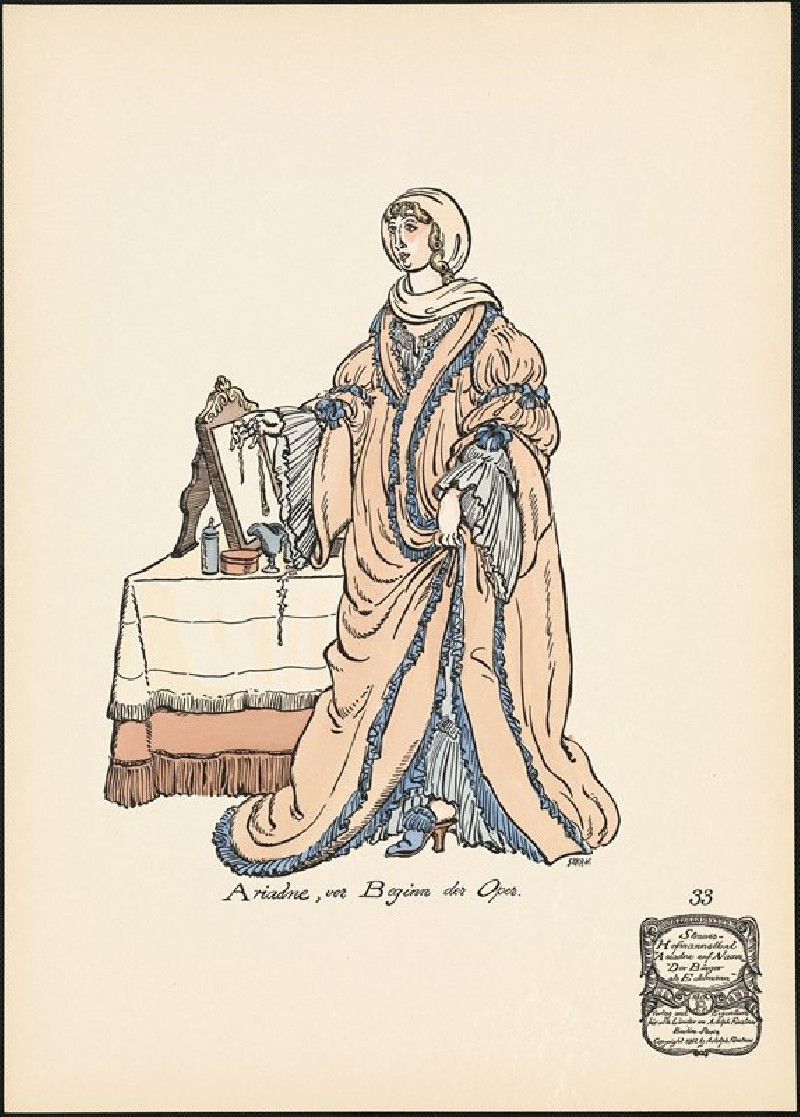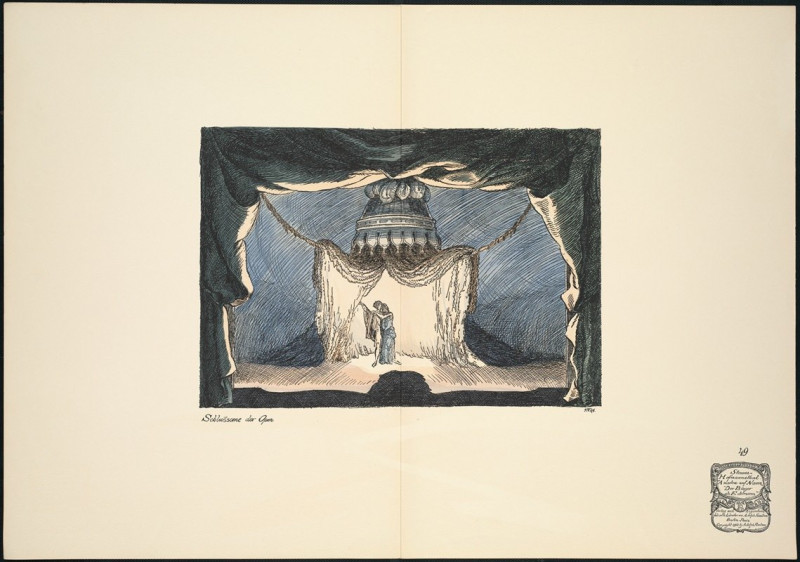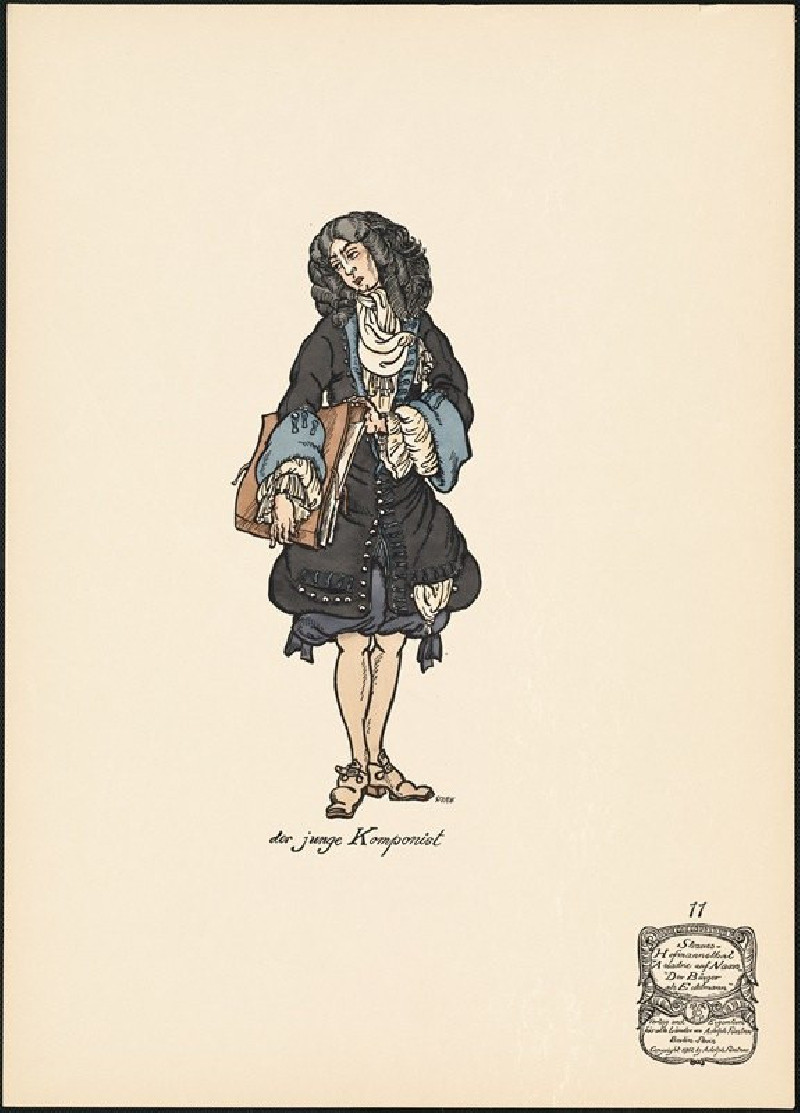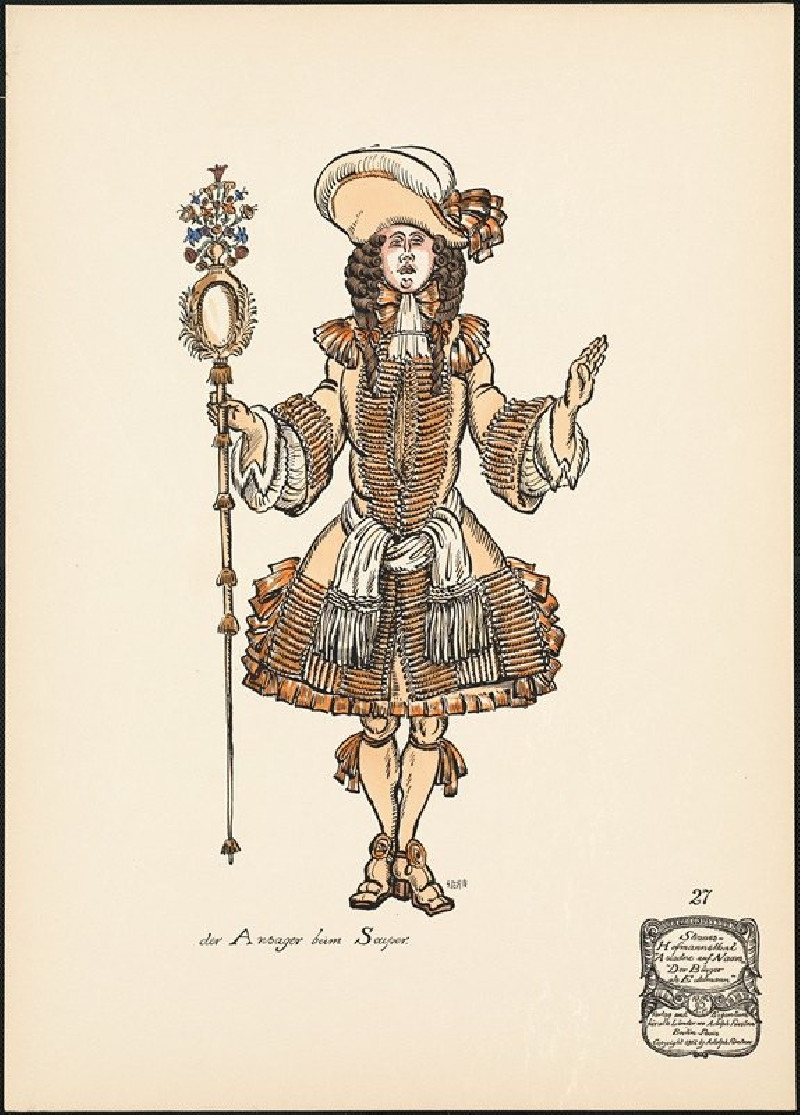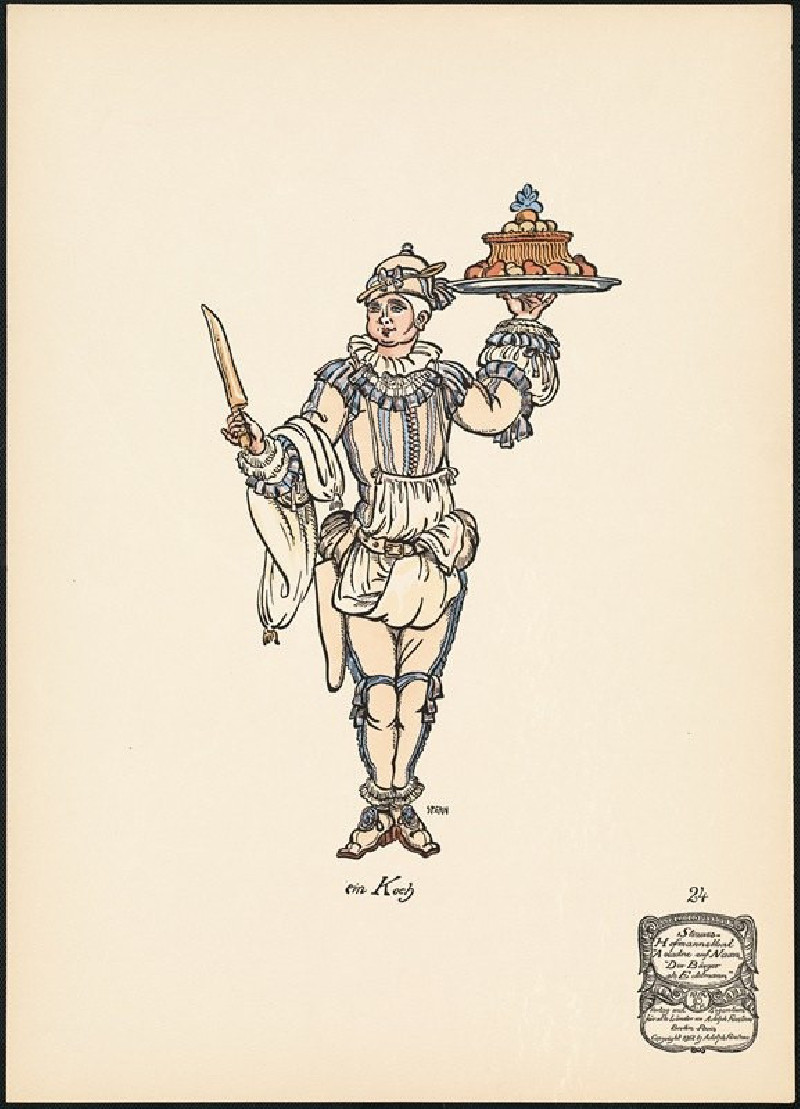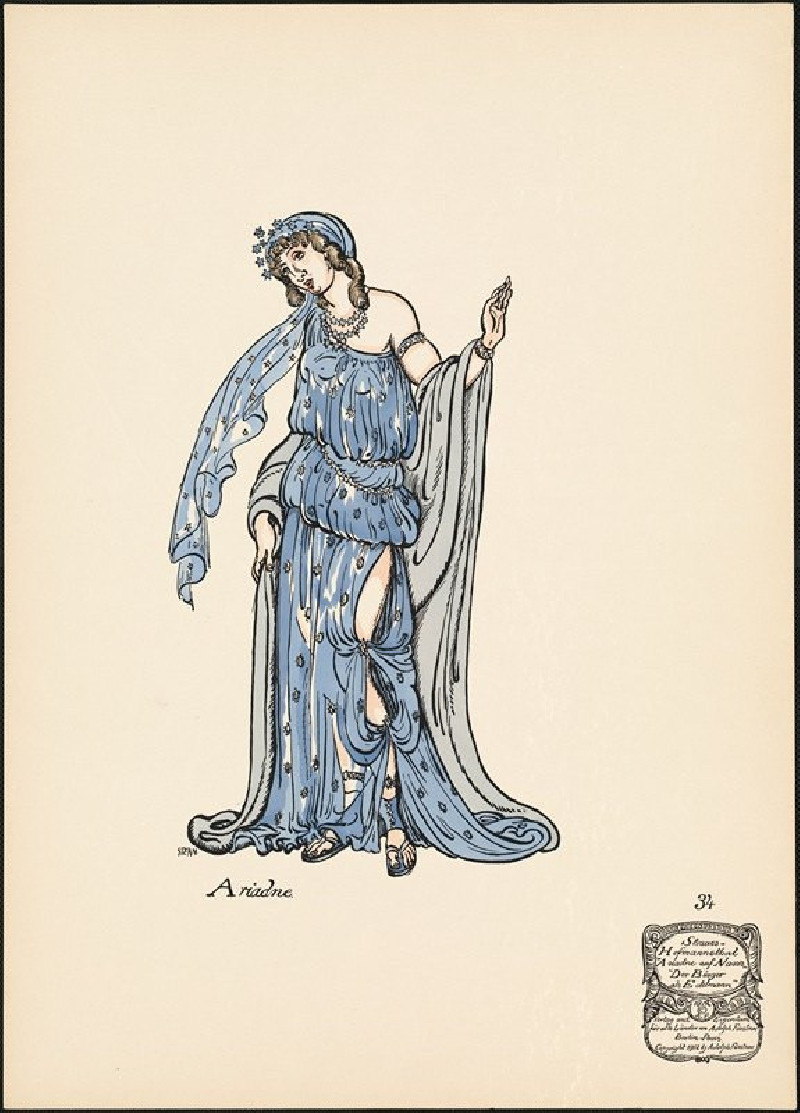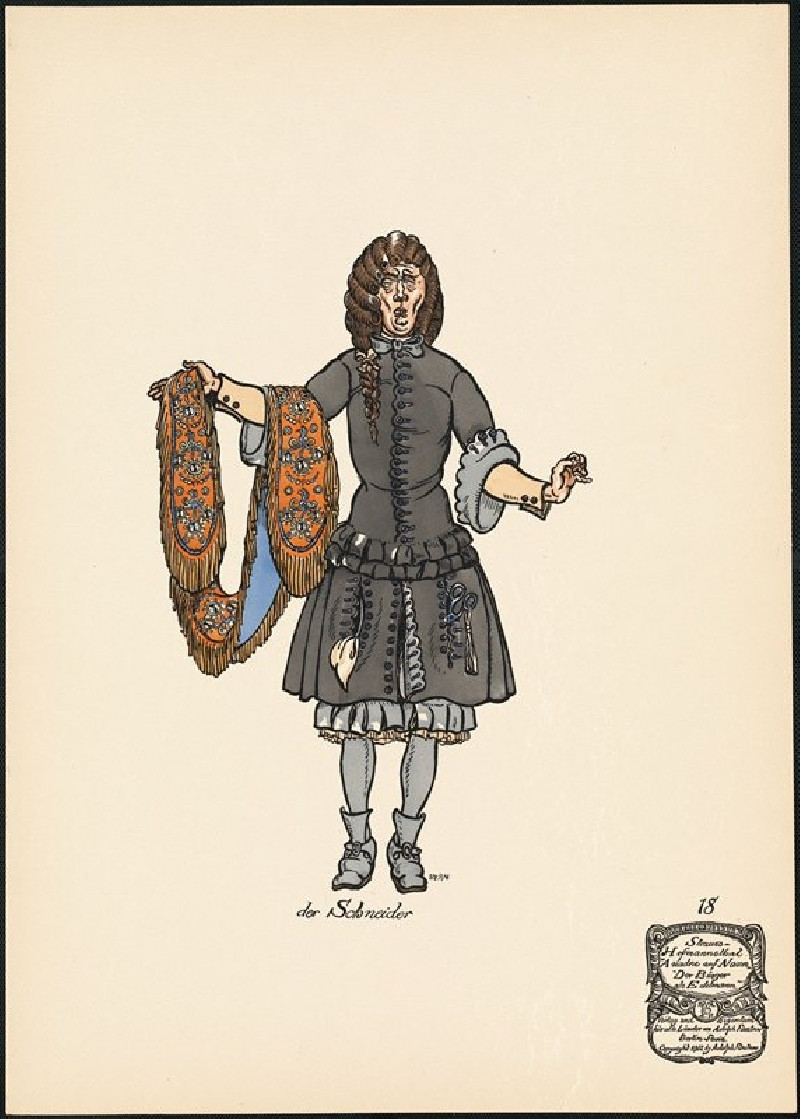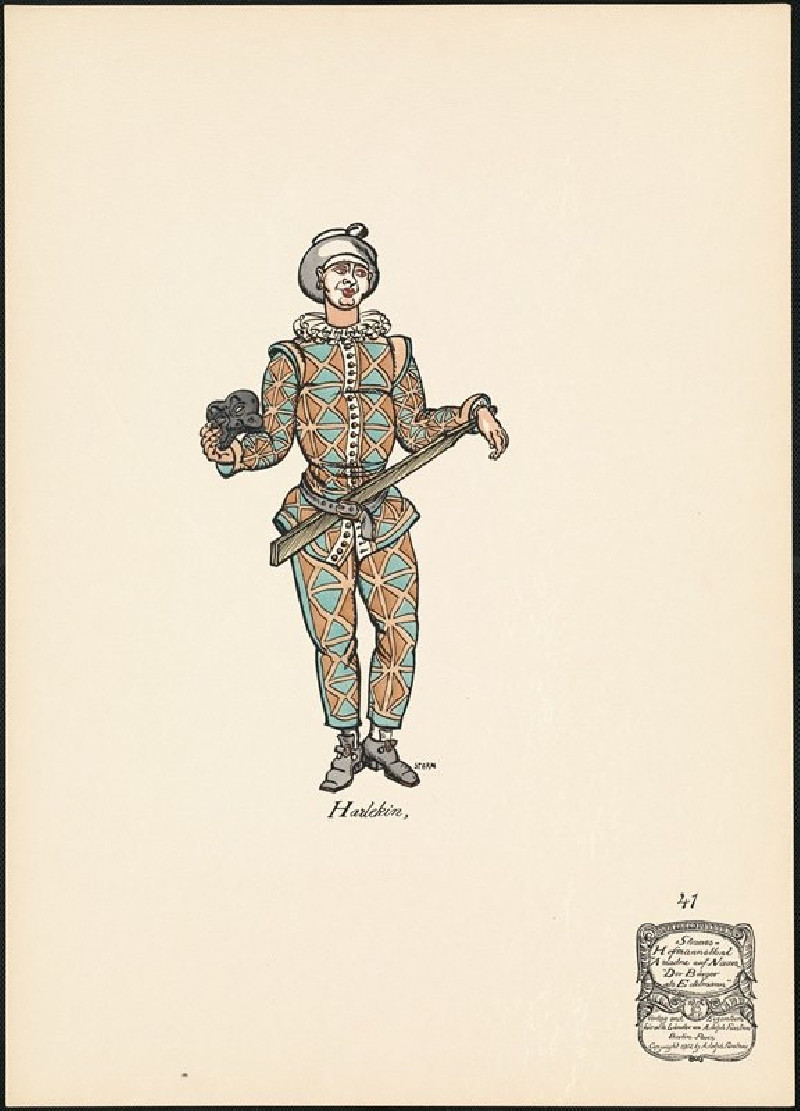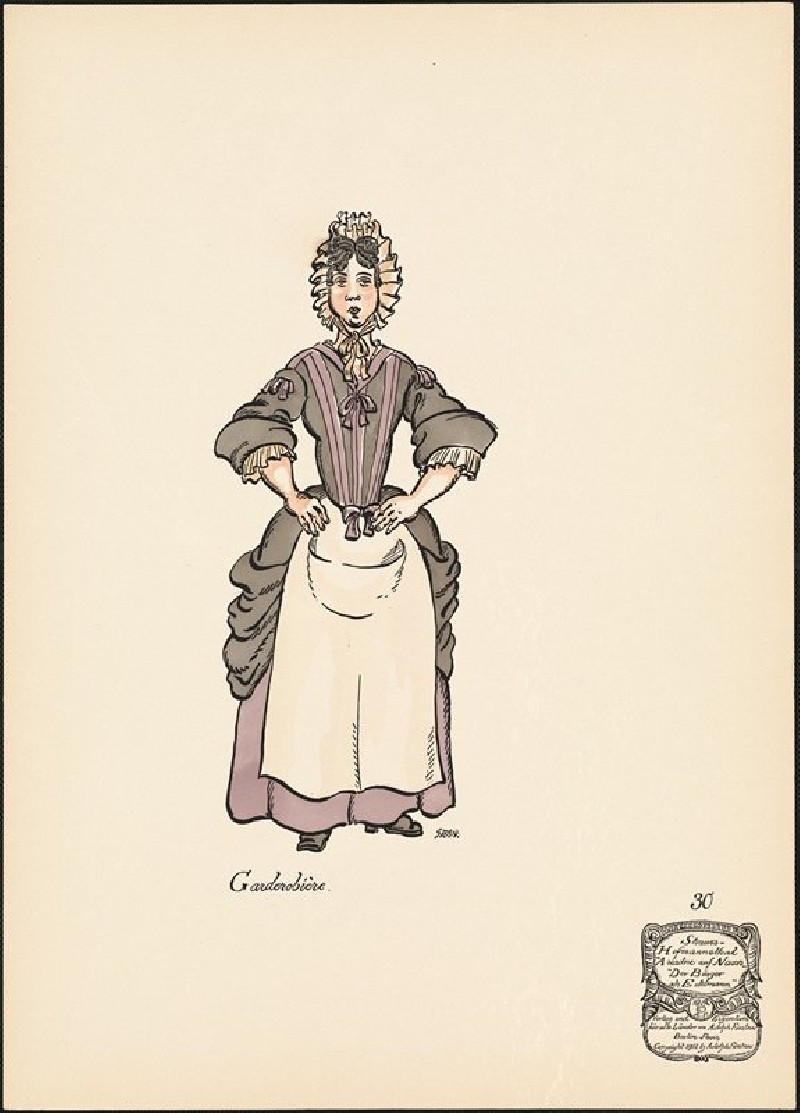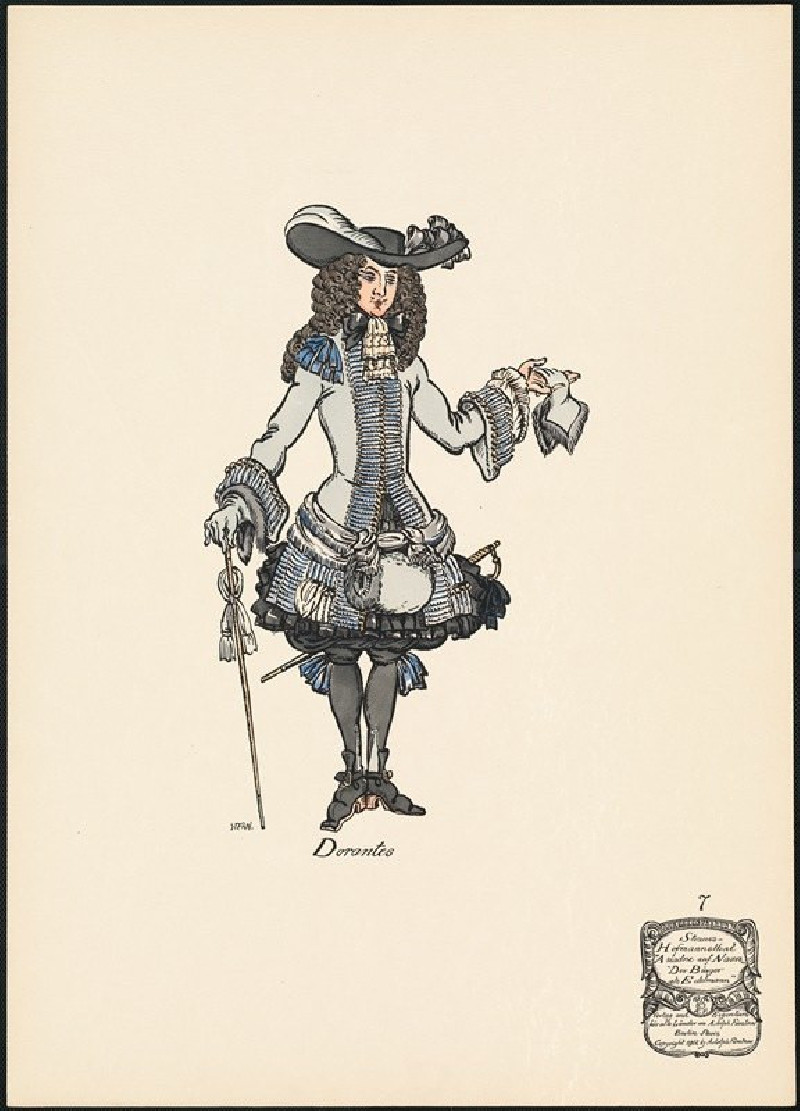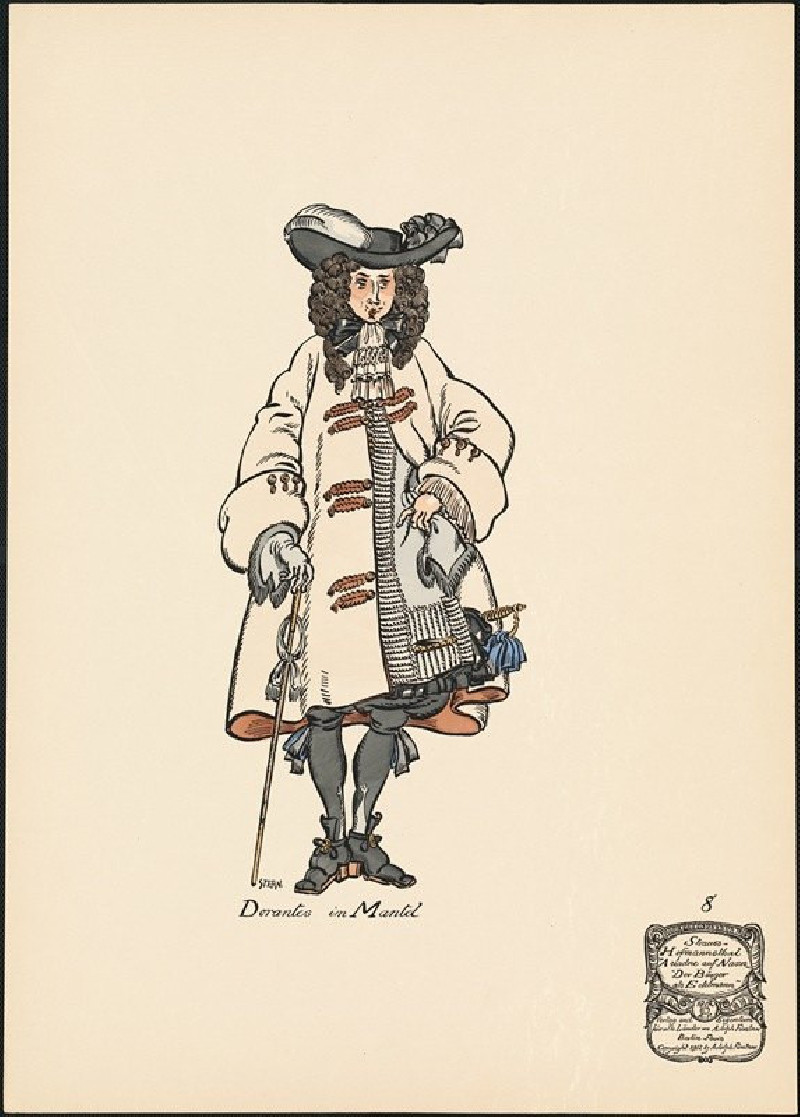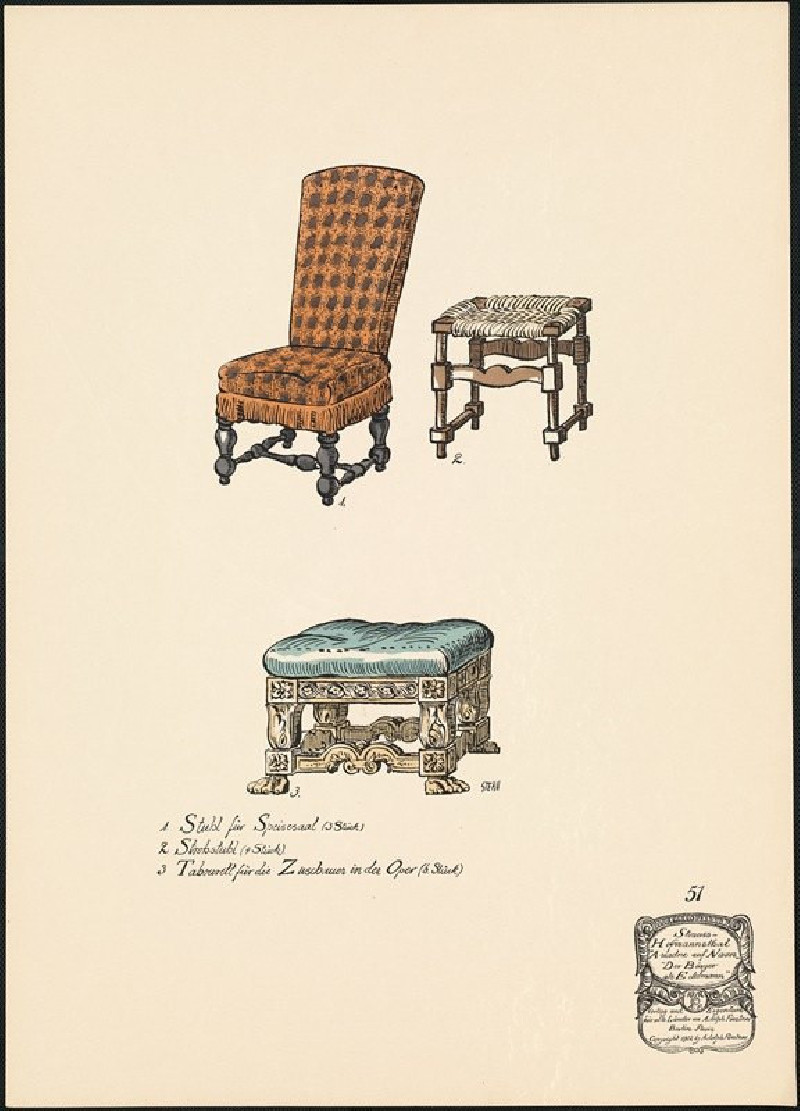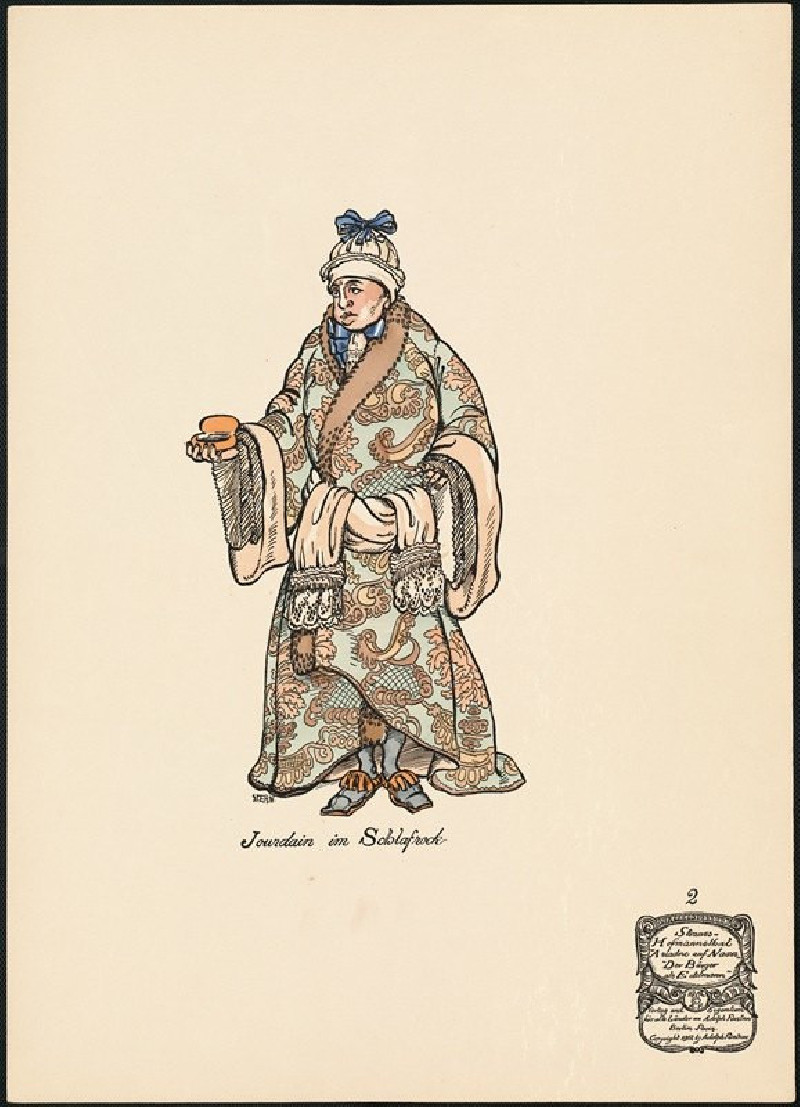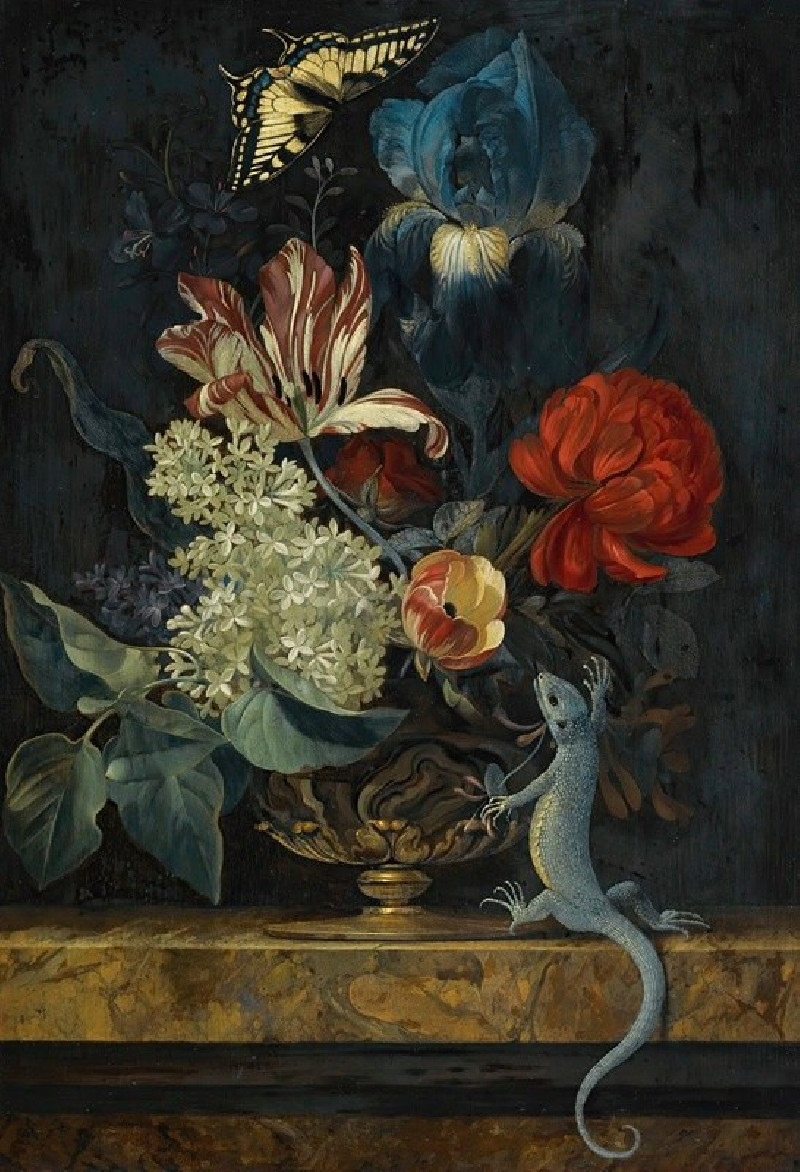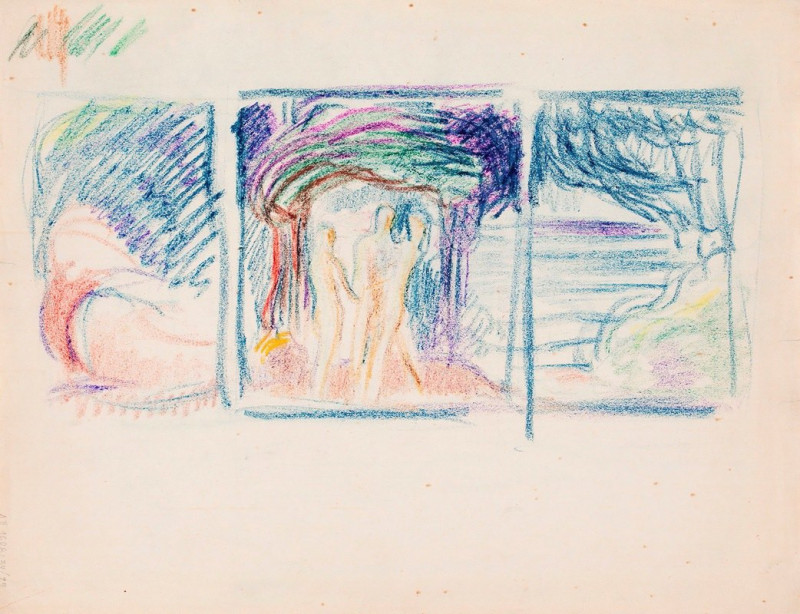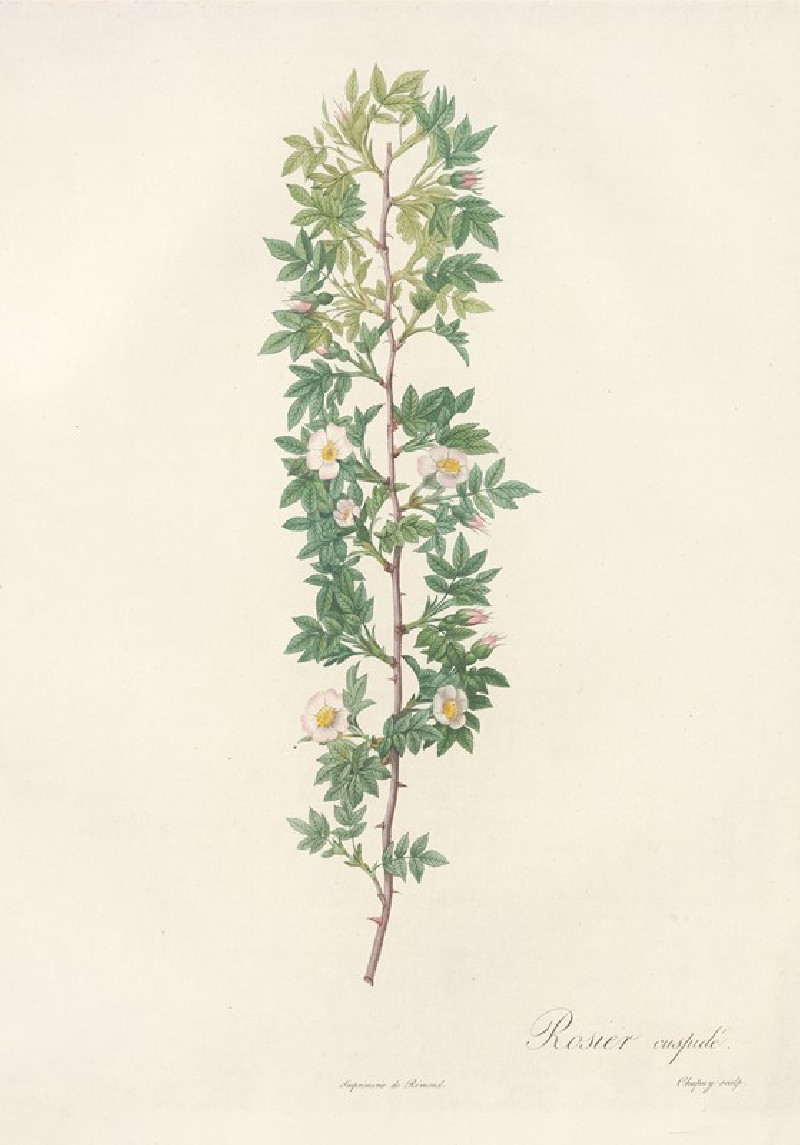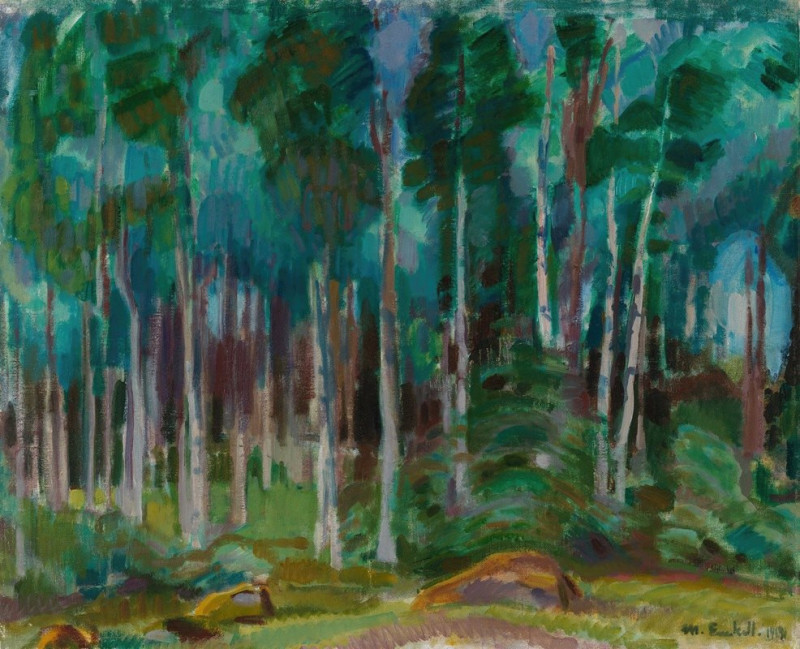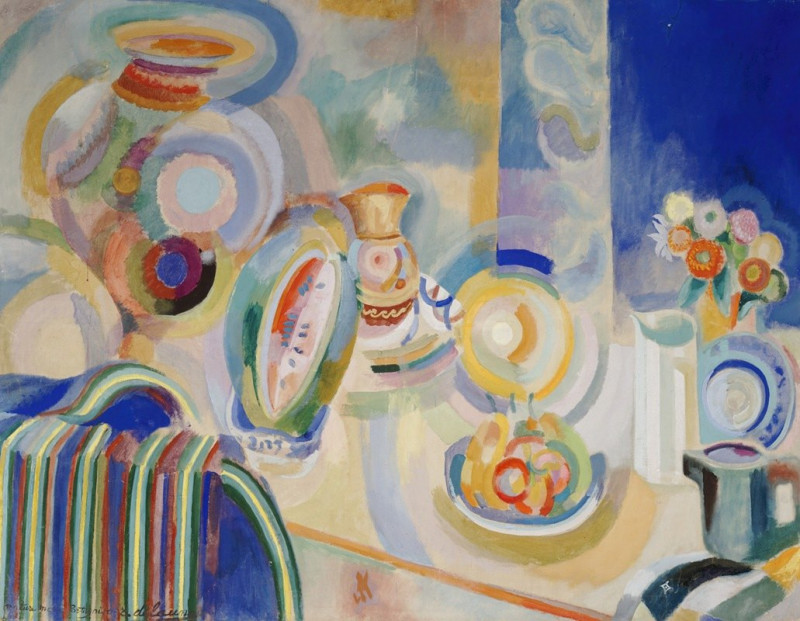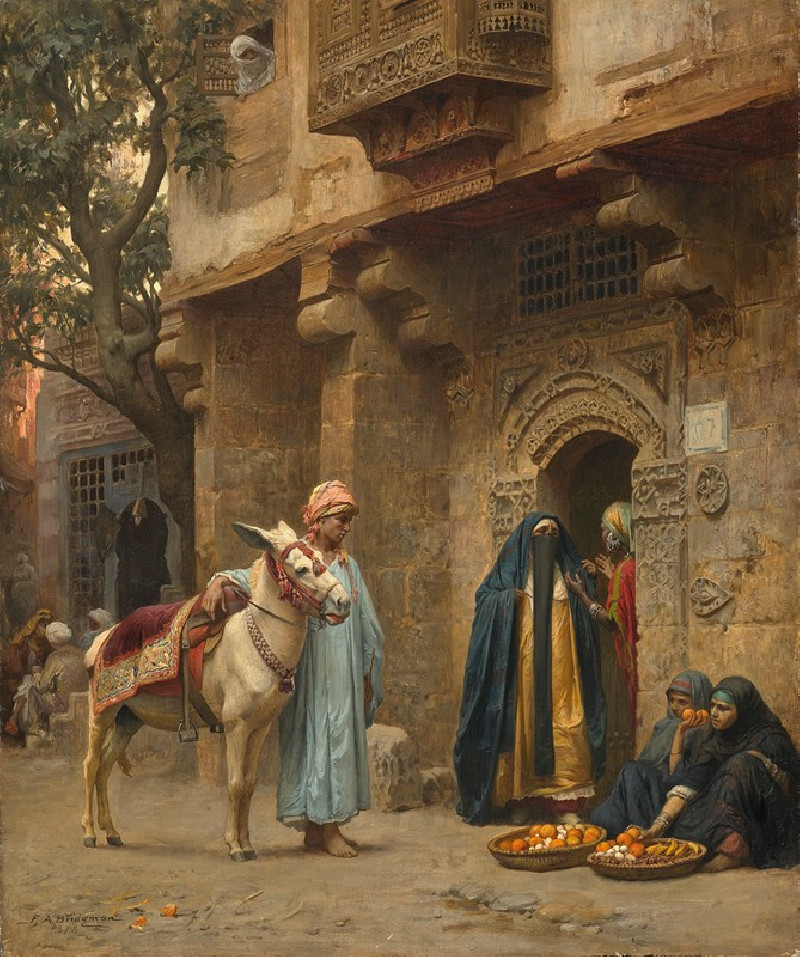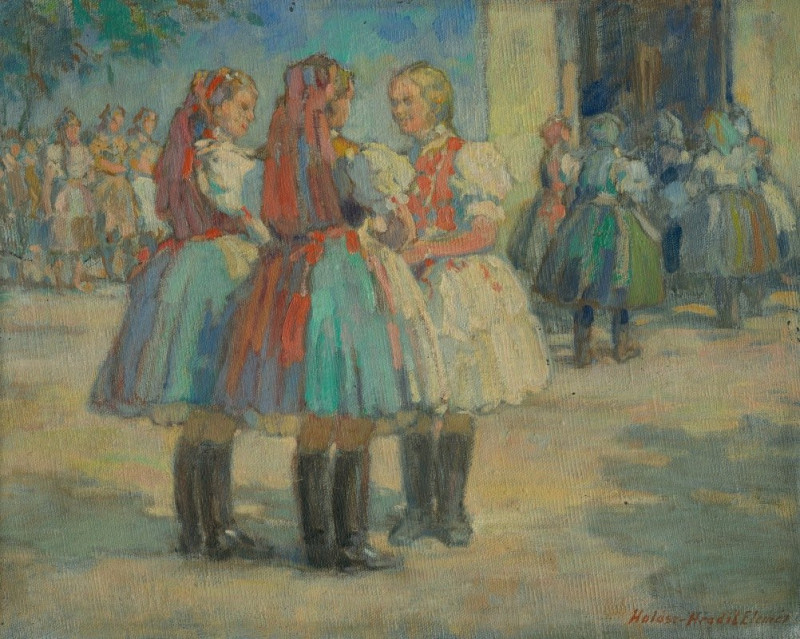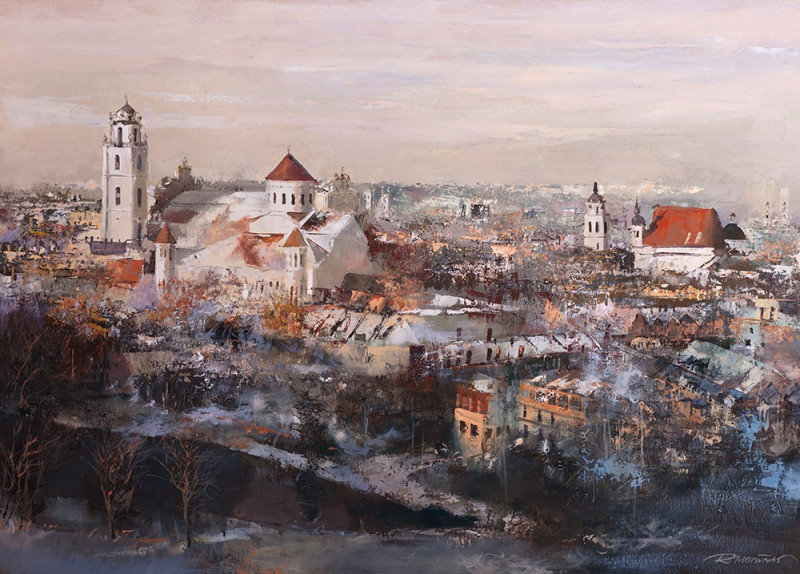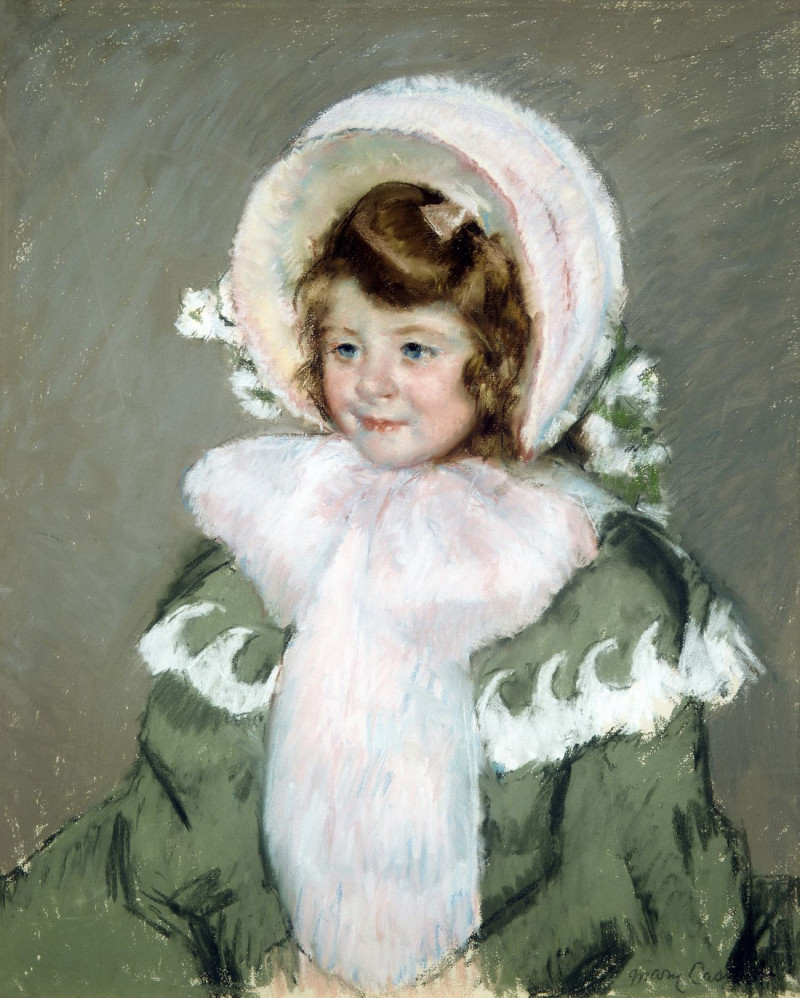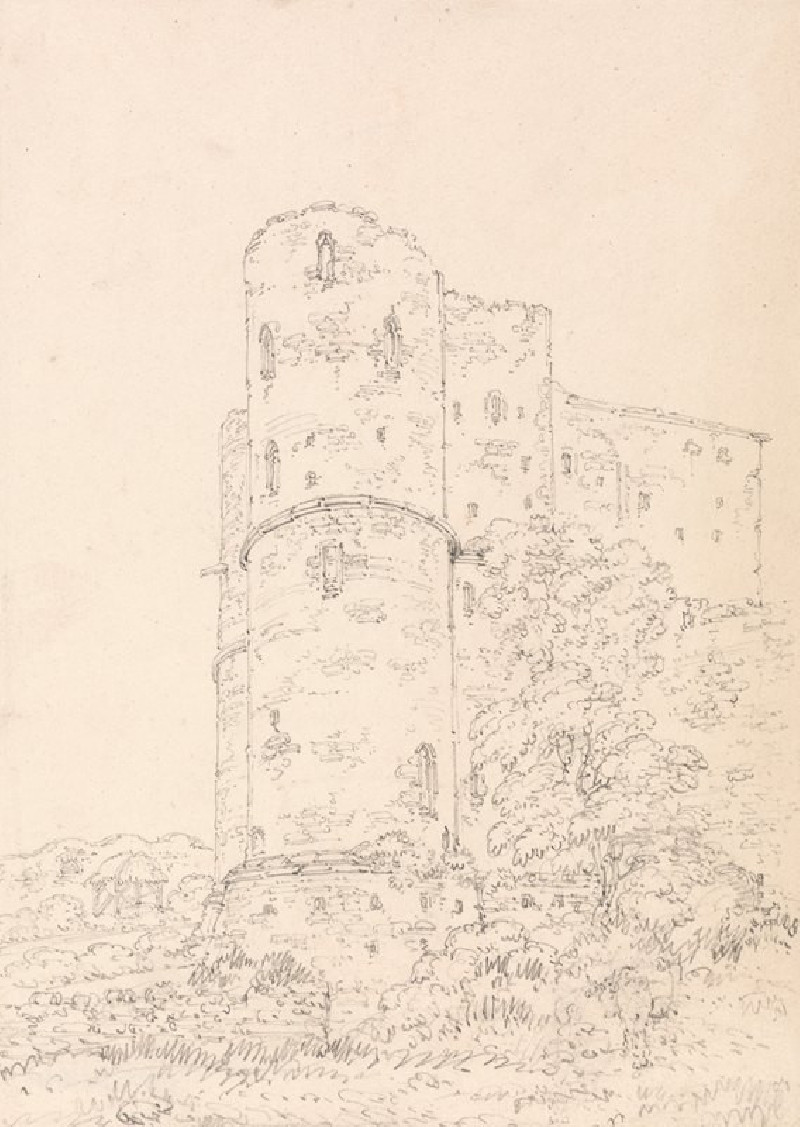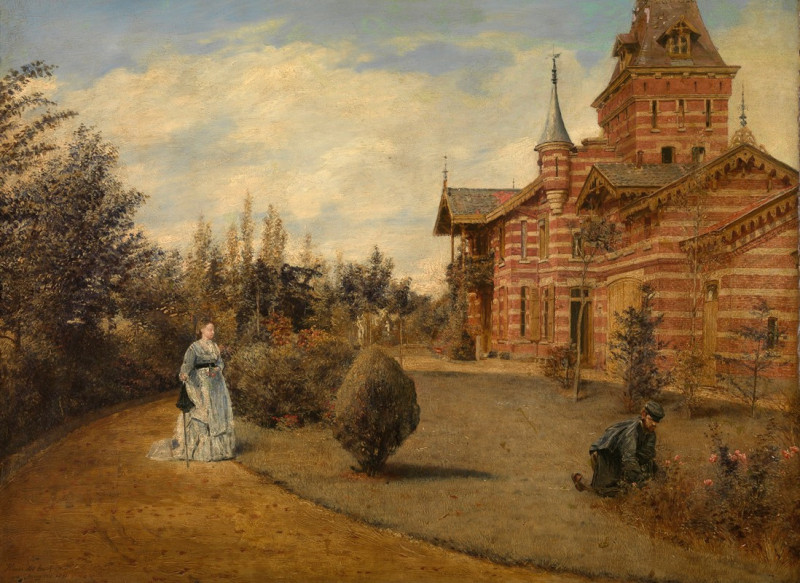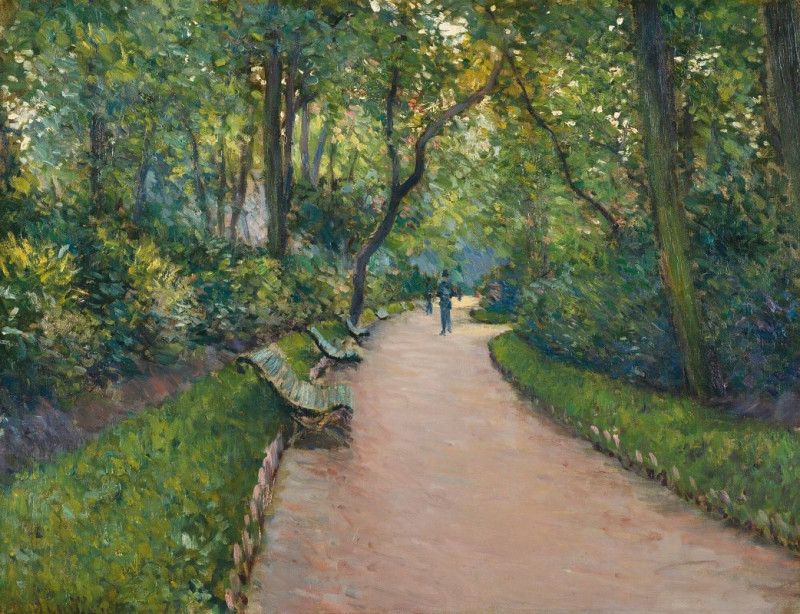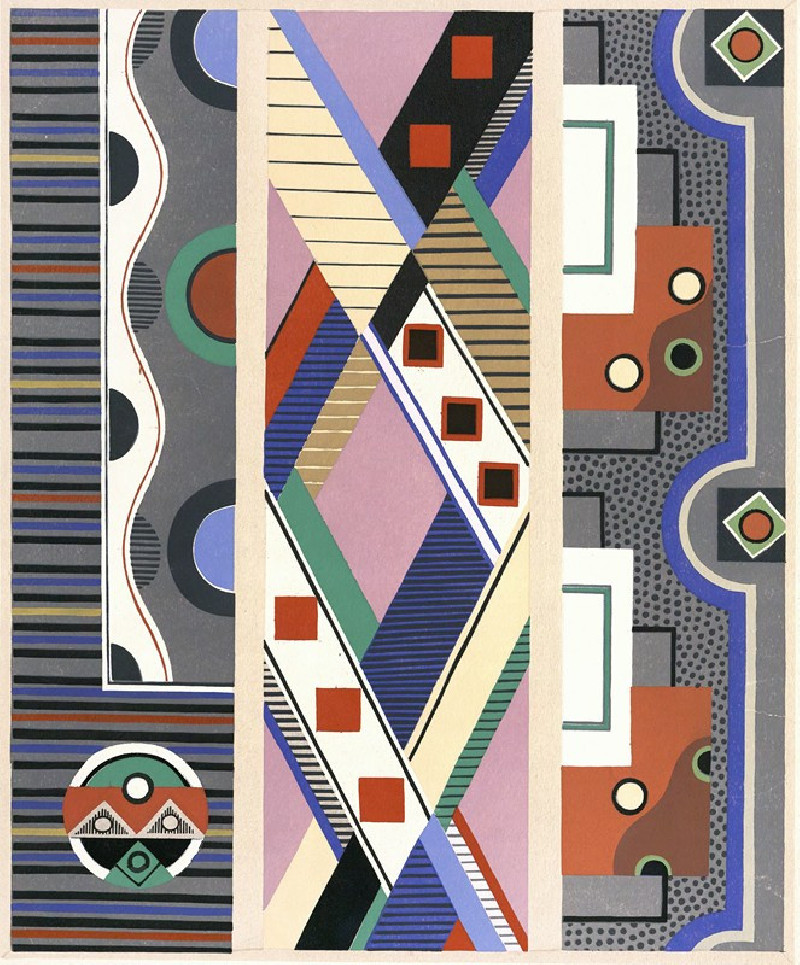Scaramuccio (1912)
Technique: Giclée quality print
Recommended by our customers
More about this artwork
Titled "Scaramuccio," this fascinating painting from 1912, by the artist Ernst Stern, wonderfully captures the dramatic flair of a character rooted in the world of Commedia dell'Arte. The work depicts Scaramuccio, also known as Scaramouche, a roguish yet cowardly stock character who often figures as a comic servant in traditional Italian theatre.In Stern’s depiction, Scaramuccio stands in an expressive pose with one hand extended, perhaps caught in the midst of a cunning or humorous monologue. He is dressed in period garb that includes a large, ruffled collar, a dark, cape-like coat, and a sword at his side, emphasizing his theatrical role as a jester or trickster. His facial expression conveys a mixture of mischief and self-assurance, fitting to his character that historically uses wit and charm to navigate social situations.The use of soft yet vibrant colors lends a lively quality to the artwork, capturing the viewer's attention and highlighting the theatrical essence of Scaramuccio. This piece not only serves as a vibrant portrayal of a traditional theatrical figure but also offers insight into cultural narratives and artistry from the early 20th century.


